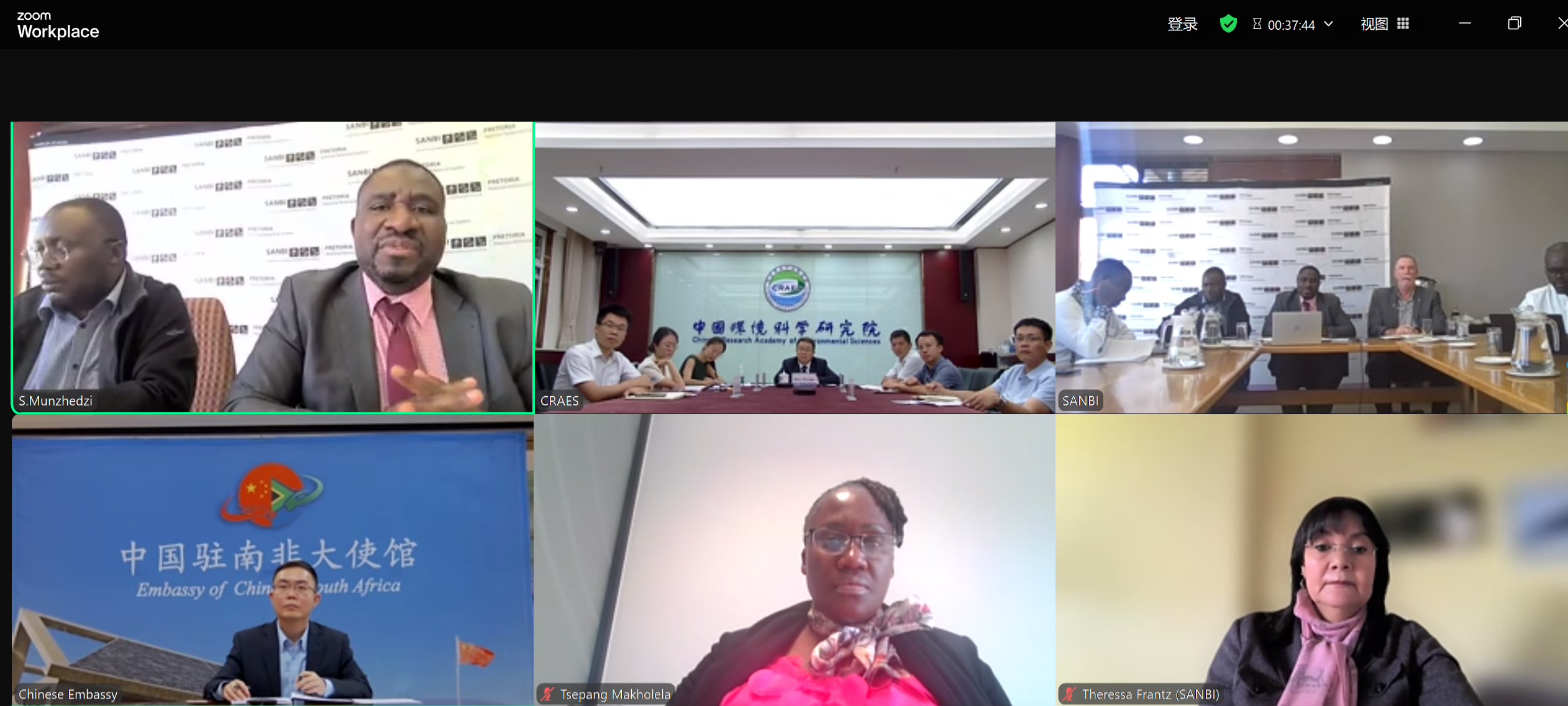
The Chinese Research Academy of Environmental Sciences (CRAES) and the South African National Biodiversity Institute (SANBI) held a video conference on strategic cooperation on September 5, 2024. CRAES Vice President Quan Zhanjun and SANBI CEO Shonisani Munzhedzi had an in-depth exchange of views on their future cooperation and reached several important consensuses.
Quan Zhanjun gave an overview of CRAES and its latest progress in biodiversity conservation. He said that the talks with SANBI, held during the Beijing Summit of the Forum on China-Africa Cooperation, offered a golden opportunity to discuss their path of cooperation and green development.
Noting the broad prospects of cooperation in such areas as biodiversity survey, monitoring and evaluation, prevention and control of invasive alien species, and the safety of transgenic organisms, Quan urged the two sides to seize the new opportunities of global biodiversity conservation presented by COP15, and further deepen their practical cooperation through better planning and alignment.
Shonisani Munzhedzi presented SANBI’s latest progress in biodiversity research, management and conservation. He said that as an authoritative research institute on biodiversity in South Africa, SANBI shares some research interests with CRAES, and their extensive cooperation across a number of areas holds great potential. He hoped the two sides could work together on a five-year development plan through the meeting, and form a joint work group to study how to implement the Kunming-Montreal Global Biodiversity Framework, so as to lay a firm foundation for more solid and extensive cooperation in the future.
CRAES and SANBI reached a primary agreement on the details of signing an MoU on cooperation, covering the level, form, and priorities of cooperation. They also formed a joint work group to escort and advance their practical cooperation.
Xie Wei, second secretary of the Chinese Embassy in South Africa, relevant officials from SANTI, and relevant personnel from the CRAES International Cooperation Center and Institute of Ecology were present at the meeting.
